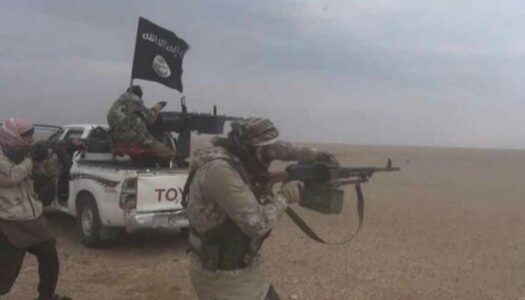
Islamic State terrorist group changes its strategy in Syria
Since the beginning of this year, the Islamic State Organization (ISIS) has transformed from launching individual attacks to mass ones, and is awaiting the Turkish invasion of northern Syria, said Zana Omar, a Qamishli-based journalist, on Monday.
This was turned out during ISIS attack on al-Sina’a prison in the city of Hasakah early in January, and during planning several attacks in Hawl Camp, Omar added.
Since the beginning of 2022, the camp management has registered 29 murder cases for 12 Syrians, among them a paramedic for the Kurdish Red Crescent (KRC), 14 Iraqi refugees who constitute more than half of the camp’s population, 3 unidentified corps, and 15 failed attempted murders.
Hawl Camp, 45 km east of the city of Hasakah, is a house for 55.829 individuals, including 28.725 Iraqis, 18.850 Syrians and 8.254 of foreign nationalities, according to the latest statistics obtained by North Press.
Omar believes that ISIS has made plans to release 11.000 members and families of the terrorist organization, including people called Jihad Sheikhs, who participated in critical operations in Europe, the Gulf States and the Arab countries during the years of the organization’s control.
If Turkey launches its military operation, the SDF’s priorities in fighting ISIS will change, as it will shift to the stage of defending and repelling Turkish attacks, Omar noted.
He described that ISIS is awaiting the Turkish operation to escape the security pressure imposed by the SDF and to take advantage of the security gap in the deserts of Deir ez-Zor, Raqqa and Hasakah.
Last month, the Syrian Desert returned to the conflict forefront again between ISIS sleeper cells on one hand and the Syrian government forces along with Iranian-backed militias on the other.
In June, ISIS carried out about 11 operations in the Syrian Desert, during which 42 soldiers of the government forces were killed and 31 others were wounded to varying degrees, in addition to the death of a civilian and the injury of 14 others with varying injuries, according to the Syrian Observatory for Human Rights (SOHR).
Omar pointed out that Deir-ez-Zor desert poses the greatest danger, since it is open to al-Anbar desert in Iraq, where ISIS sleeper cells are present. This brings back the fears of 2014 scenario and the return of ISIS.
The journalist indicated that the second level of danger lies in the fact that any area “occupied” by Turkey is turned into a safe haven for ISIS members and leaders, through the support they get from the so-called Turkish-backed Syrian National Army (SNA).
“Al-Baghdadi and Abu Ibrahim al-Qurashi appeared in those areas, and finally Maher al-Aqal, and the list goes on,” he added.
Source: SOHR





